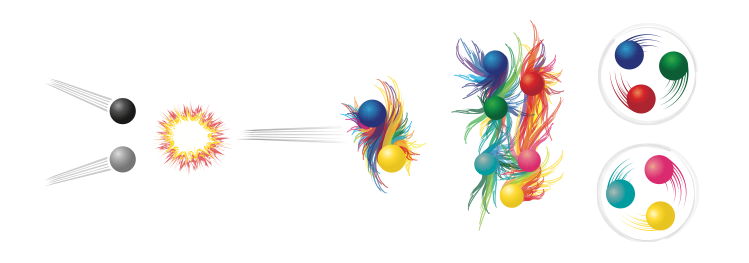Exploring the interior of a particle that only lives a fraction of a nanosecond may seem like an impossible task. However, a new experimental study from the BESIII collaboration, led by researchers from Uppsala university, shows the way. This goal is to understand the unstable sibling of the proton, namely the Lambda hyperon. Despite the similarity between protons and hyperons – both quark-triplets - they require fundamentally different approaches to probe their inner structure. Methods that have been immensely successful for the stable proton are unfeasible for the short-lived hyperons. However, hyperons have a unique feature: when decaying, they reveal their inner magnet - their spin - through the directions of their daughter particles. BESIII presents measurements of the spin properties of Lambda hyperons, produced with their antimatter equivalent, anti-Lambda, in high-energy electron-positron collisions. A sequence of “snapshots”of the time evolution of this complicated process has been extracted from the spin properties. These “snapshots” are encoded as form factors and are related to the location and motion of quarks inside the hyperons. Furthermore, the form factors can be utilized to calculate the hyperon charge radius. The BESIII results indicate that negatively charged quarks reside close to the center of the hyperon, shedding new light on how quarks form the matter we are made of.

Artistic interpretation of an electron and its antiparticle, the positron, colliding and annihilating (left). From the released energy, quarks and antiquarks emerge (left-middle). These carry colour charge and interact strongly, resulting in even more quarks and antiquarks (middle-right) from which a hyperon (top-right) and an antihyperon (bottom-right) can form. This process reveals the inner structure, including the electric charge radius, of the hyperon and the antihyperon. Picture credit Göran Durgé.
Reference: Phys. Rev. Lett. 135, 191902 (2025)
Paper link : https://journals.aps.org/prl/pdf/10.1103/9f1h-fl4k


